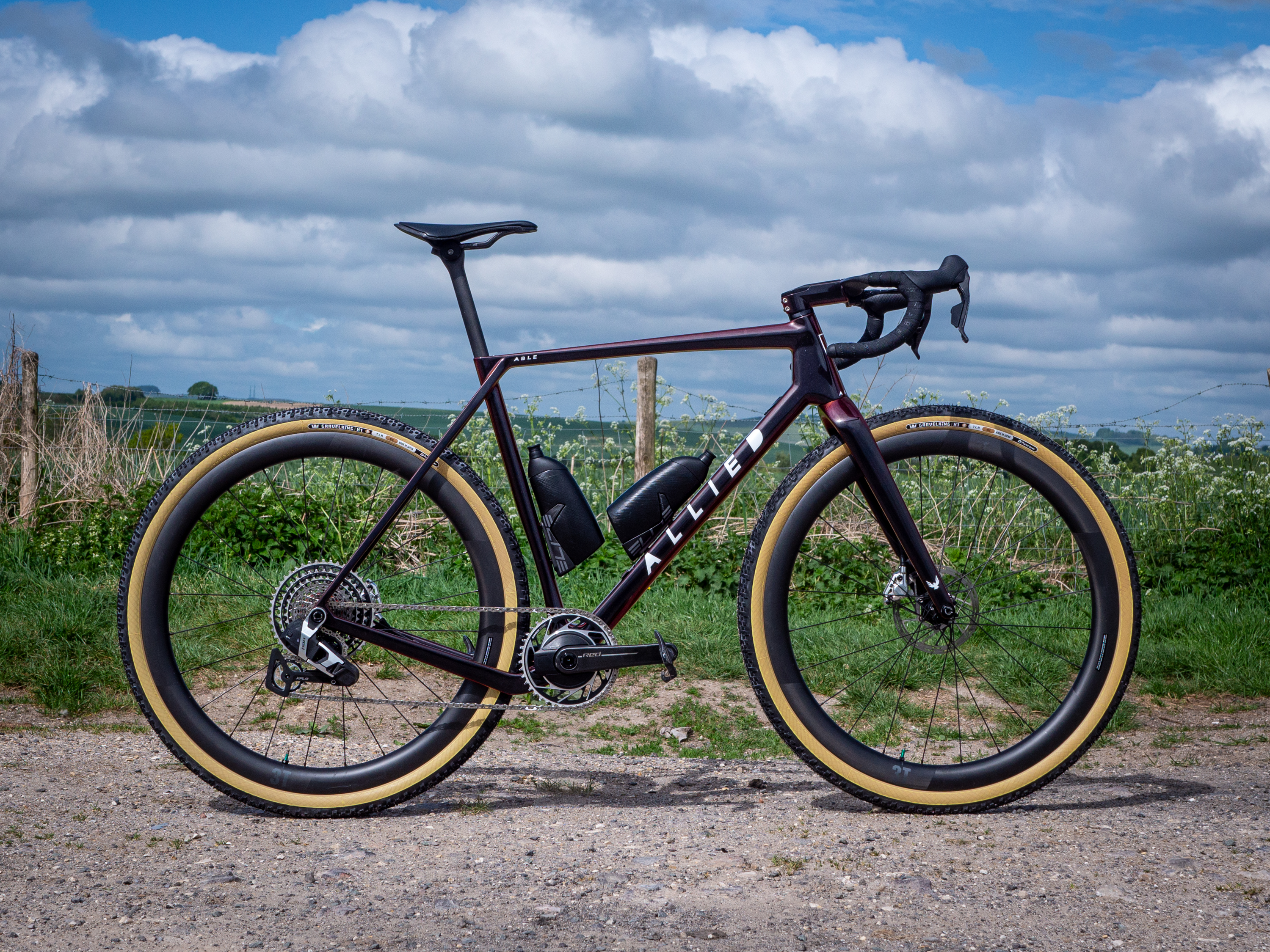Cyclingnews Verdict
The future of gravel race bikes is here.
Pros
- +
Huge tyre clearance and specced accordingly
- +
Great aesthetics with endless colour choice
- +
Competitive weight
Cons
- -
The storage door position makes it largely useless
- -
Ride quality relies on big tyres
You can trust Cyclingnews
The Allied Able has long been a bike I've yearned to ride. The original iteration was a wild conception that immediately turned heads, albeit not always for the right reasons, with its raised driveside chainstay.
It boasted a progressive-for-its-time tyre clearance of 43mm, sharp handling, and a focus on racing.
And while most bikes are an evolution of their predecessor – see the recently leaked 2025 Specialized Diverge for proof – the complete redesign of the 2025 Allied Able is a reflection of the step change that has occurred in the gravel riding and racing space since the original launched.
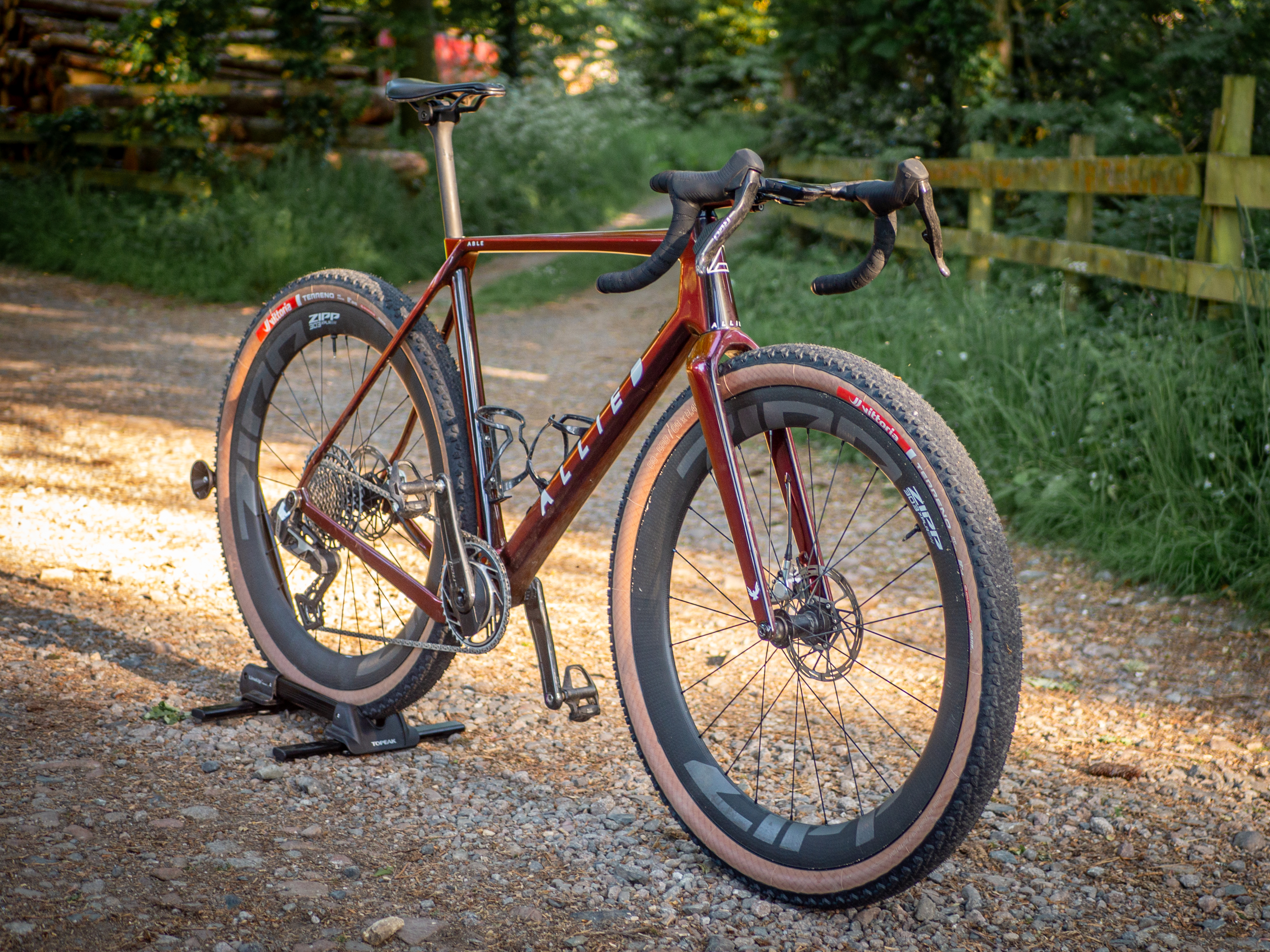
Racing has gotten faster and a whole lot more serious. Most brands have launched a second gravel bike (some even a third) to dial in their offerings for racers and adventurers alike. Big tyre clearance has transitioned from a feature reserved for 'adventure' bikes to a non-negotiable for racers, to the point that nowadays, most elite athletes are running cross-country tyres.
And although time trial bars are banned at races like Unbound and The Traka, aerodynamic optimisation gets ever more ubiquitous, with racers repeatedly turning up in skinsuits and time trial helmets. A quirky few even run adapted disc wheels - I'm looking at you, Chase Wark - as seen in our Unbound tech gallery.
Over the past year, I myself have turned to gravel racing too. I recently qualified to ride at the UCI World Championships later this year (age group category only, I'm not that good, but congratulations to me nonetheless), and I did so aboard the new Allied Able.
The frame is available in three builds, each with a SRAM wireless groupset, plus a frameset, and I was kindly loaned a review sample in the top-tier hero spec, equipped with SRAM Red XPLR AXS groupset and a 38cm Enve SES AR road handlebar. Since my sample bike arrived with no wheels, I have tried it with both the 3T Discus and Zipp 303 XPLR SW wheels, with a variety of tyres in sizes ranging from 40mm slicks to 2.4in mountain bike tyres.
The latest race content, interviews, features, reviews and expert buying guides, direct to your inbox!
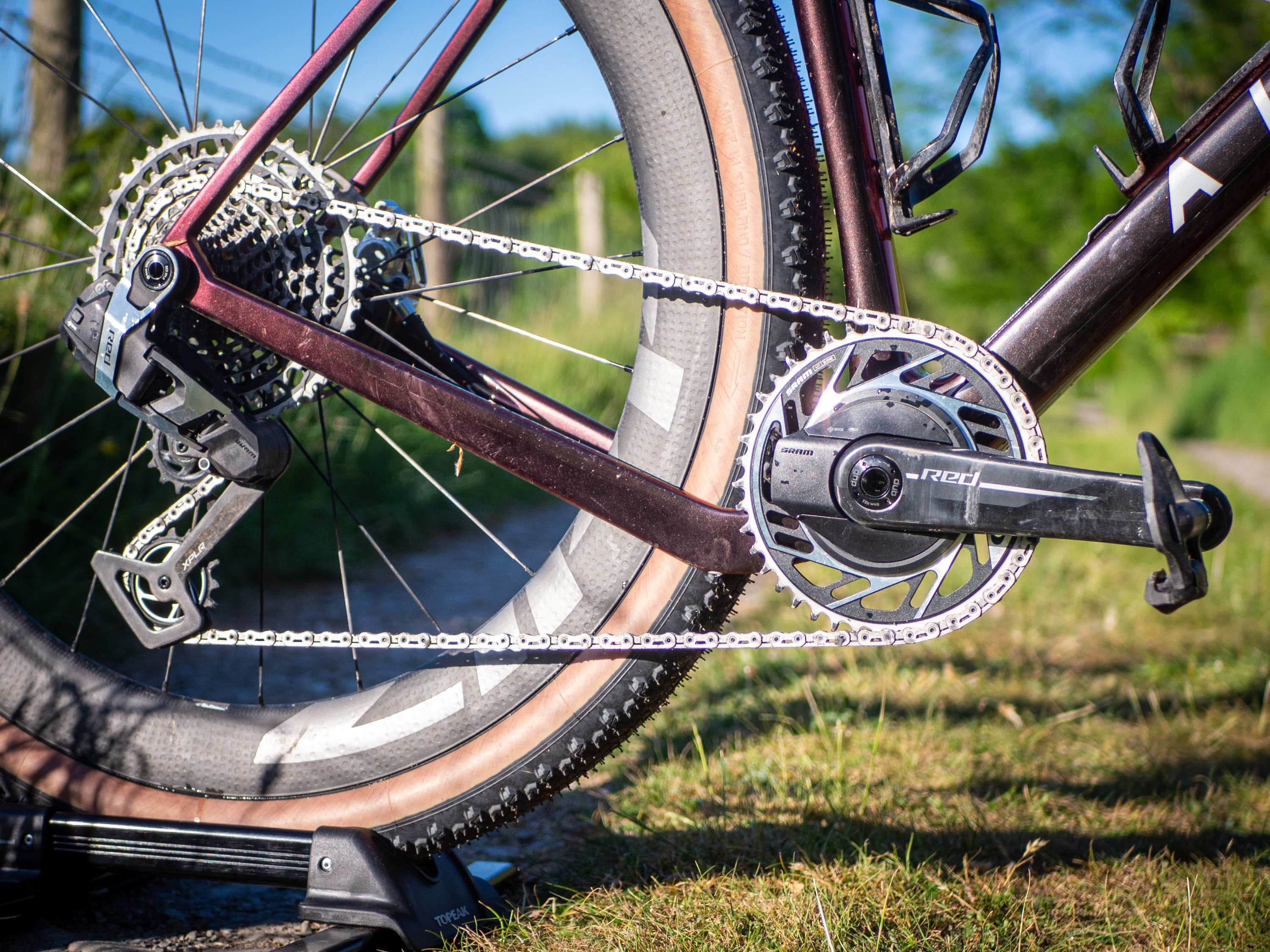
Design, aesthetics and specification
Starting with the most visible difference from its predecessor, the aesthetically divisive elevated driveside chainstay is gone. It has been replaced with dropped chainstays on both driveside and non-driveside to maximise clearance without interfering with the cranks, limiting chainring size or leading to insanely long chainstays.
That's just the beginning of a boatload of updates that the latest Able has been given, though.
The other big one, at least in terms of meeting market demand, is the significant increase in tyre clearance, which has grown to an officially quoted 57mm both front and rear. Allied is at pains to clarify that this is as the tyre is measured, rather than as printed on the sidewall, since different tyre-rim combinations can vastly adjust the actual width once fitted and inflated.
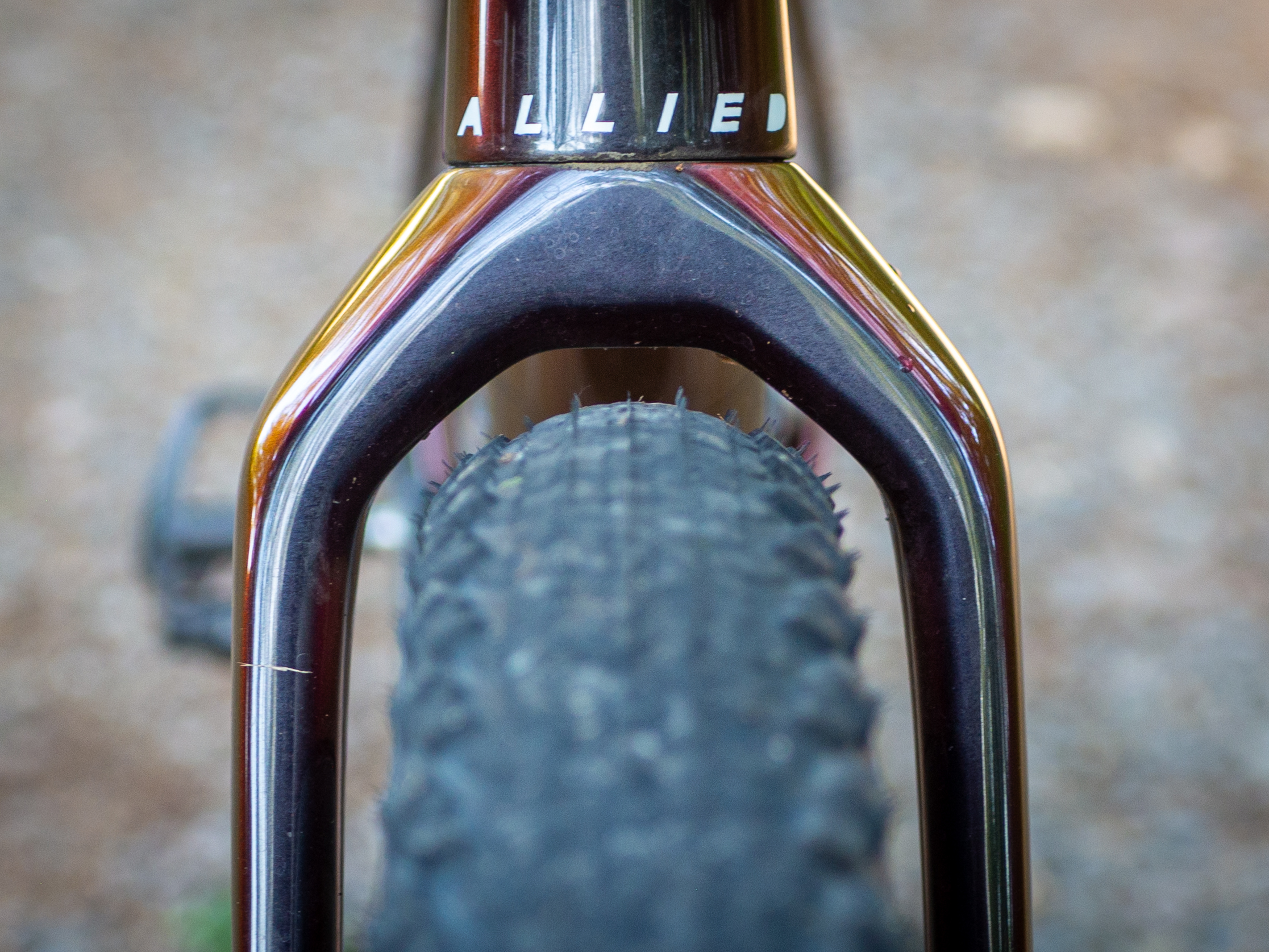
In real terms, that equates to a 2.2in mountain bike tyre on a wide rim such as the Zipp 303 XPLR wheels, but as my testing proves, you can go even wider up front without issue. I'll get into the details of that below, but my tyre stock maxed out at a 2.4in Vittoria Terreno Dry, and I still had room to spare.
Somewhat less visibly, the 2025 Allied Able's geometry has seen a fairly wholesale overhaul, too. I'd describe it as a stable platform, both in the geo numbers and the ride experience, but with racy intention that puts you in a relatively new-school forward position.
The head angle has been slackened a smidge to 70.5°, while the fork rake sits at 55mm. Compared to the previous model, the reach has been increased, and my size L/58 boasts a long and low reach and stack of 410mm and 595mm respectively. This extra reach has been offset somewhat by a shorter specced stem, but stretches the front-centre out to increase wheelbase and stability, with the nice side effect of reducing the chance of toe overlap.
While lengthening the front of the bike like this is a great way to increase stability at high speeds, especially over rough terrain, one downside is that it puts your weight further rearward on the bike.
To balance things out again, Allied has given the Able longer chainstays, which at 435mm across the range, are a little longer than the predecessor and competitors such as the Specialized Crux (at 425mm). In reality, my position on the bike felt forward and aggressive, probably somewhat a result of the long stem and slammed cockpit I was given, but even still, it felt balanced.
That helped the ride quality when descending, but the bike's climbing ability wasn't ignored. Allied shaved an enormous amount from the frame weight, with a pretty impressive claimed weight for a size medium of 950g.
My full bike build with SRAM Red XPLR, Zipp 303 XPLR SW rims, empty bottle cages, Favero Assioma SPD pedals, and 2.25in Continental Race King tyres tipped my scales at an impressive 8.4kg.
The S-Works Crux is still hard to beat in this regard, with a claimed frame weight of 725g and equivalent builds at 7.25kg, but given the extra clearance on offer here and the addition of the storage door, it's hard to complain.
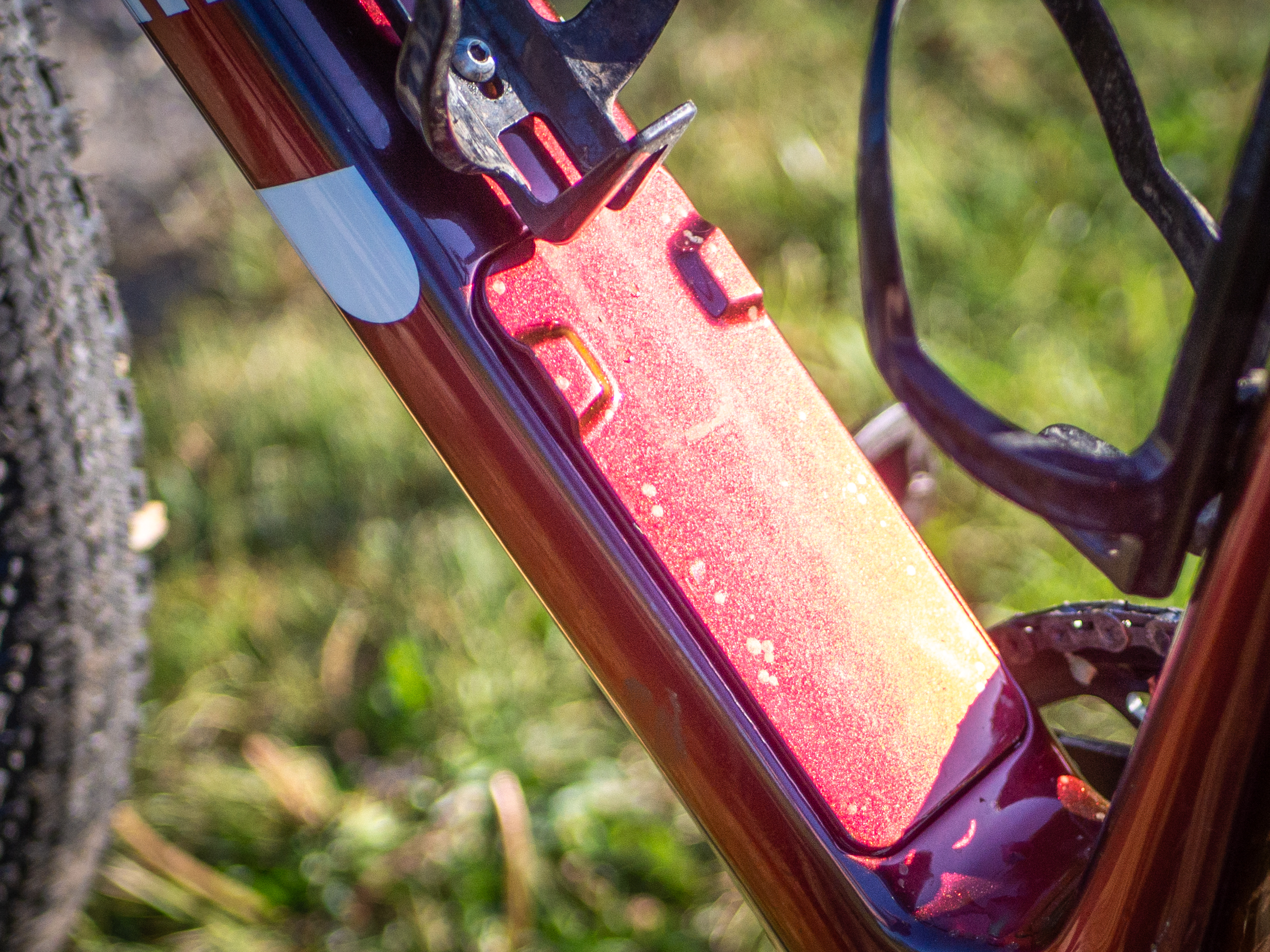
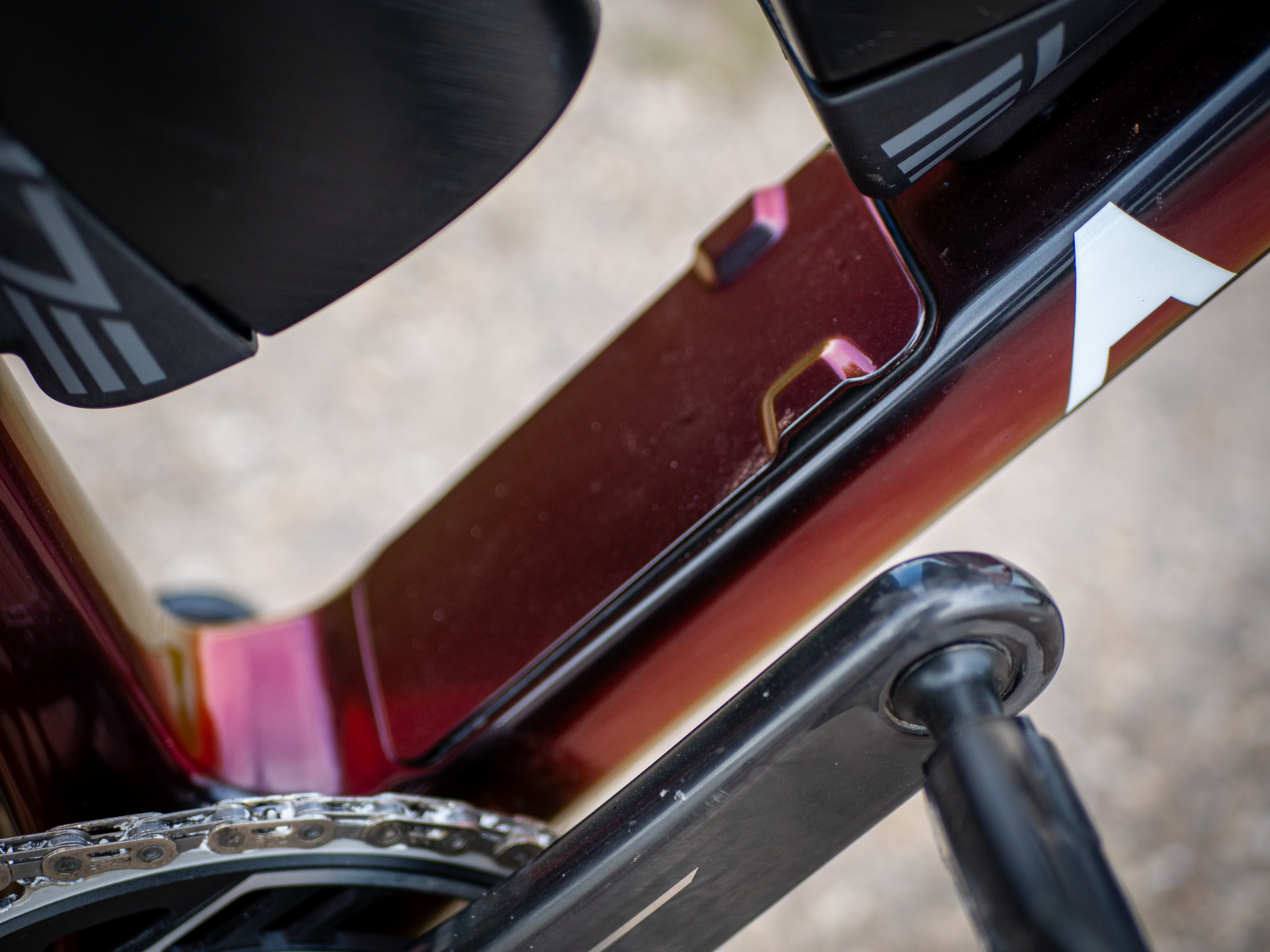
On the subject of the storage door, Allied has taken a novel approach of placing it right at the base of the down tube, rather than underneath the bottle cage mounts. It uses a simple magnetic closure, and while the brand doesn't say as much, there's a good chance that not having to support the weight of a 1kg water bottle helped the brand to keep the weight of this to a minimum. I appreciate the idea here, as well as the benefit of putting extra weight as low on the frame as possible, but unfortunately, it's not without some pitfalls, which I'll get to below.
Up front, the 2025 Able is specced with internal cabling via Allied's proprietary stem. This cleverly comes with an adjustable angle shim, which allows you to adjust your fit between -8 and 0 degrees.
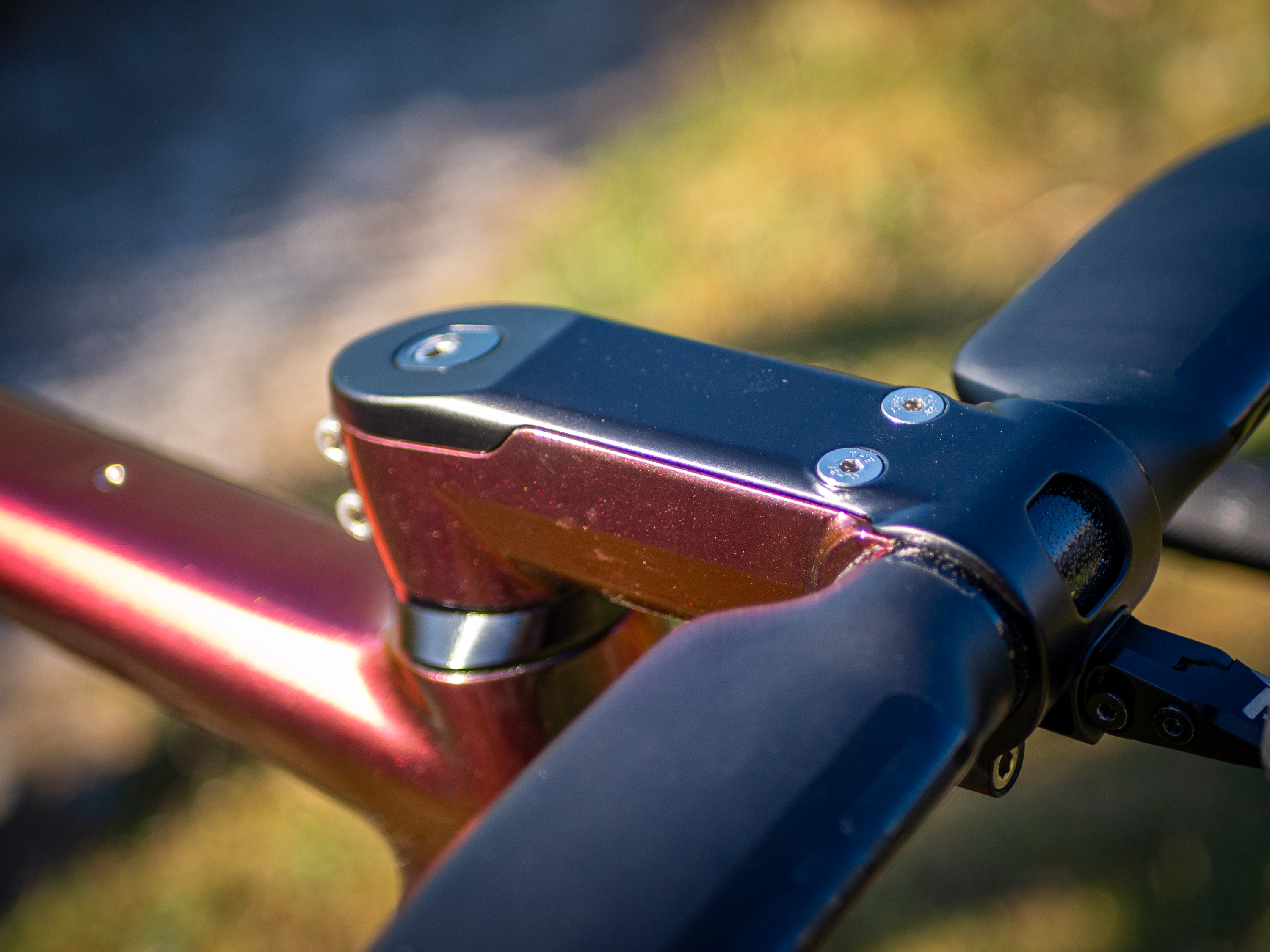
It can also be removed entirely without disconnecting brake hoses, allowing you to swap stem length without recabling. This does mean it's compatible with electronic groupsets only, but that's becoming a common theme on framesets of this level.
Should you wish to run cables externally past the headset, the small eagle badge on the down tube just behind the head tube can be removed to reveal a cable entry port.
Elsewhere, the new Allied Able has a threaded bottom bracket, with 68mm English threads and spacing for Wide cranks. This is good for the home mechanics, and although there are different schools of thought on wide cranks versus the narrower Q factor of road cranks, it's not something I can say I had any issues with. I would certainly prefer the wider Q factor to get the bigger clearance, and in fact, some gravel racers - Zach Calton springs to mind - run wide Q-factor pedals for comfort, so narrower isn't always better.
The frame is compatible with 1x groupsets only, with the dropped chainstays offering space for chainrings up to 50T in size.
It is UDH and direct-mount compatible at the rear, and suspension-fork compatible at the front, although Allied is careful to remind potential buyers that this will likely reduce the available tyre clearance.
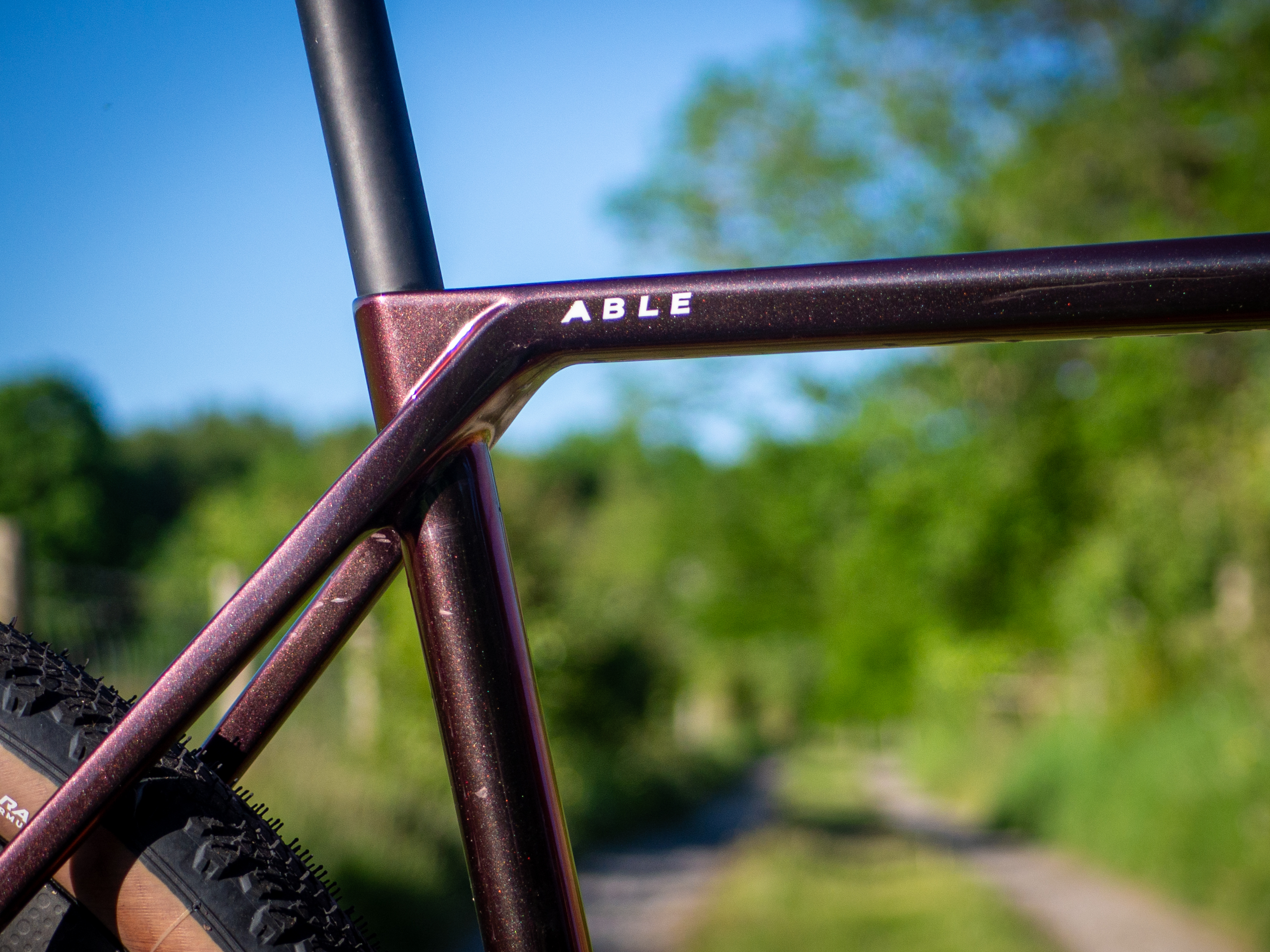
The seatpost is round, with the widely accepted standard of 27.2mm diameter, secured by an easy-access wedge clamp that is adjusted from the front, on top of the top tube. This also means a 27.2mm dropper post would be compatible, and that cable port mentioned just now, hidden behind the eagle badge, can also be used to run your dropper's cable internally.
The Allied Able is available in no fewer than 13 different stock colours, each with a choice of up to four logo colours. If that's not enough choice, you can alternatively go full custom, although the cost of this "depends on the complexity of the design."
Performance
To put it simply, the Allied Able is one of the best gravel race bikes on the market right now.
The aggressive ride position paired with the long wheelbase makes it a little one-dimensional, but hey, that's no bad thing, given it does that thing so exceptionally. That'd be a bit like deriding a Trek Madone for being bad off-road. And don't get me wrong, it's not unhappy being flicked about on twisty trails, but there are better bikes out there if that's your aim.
What it does really well is going fast on rocky, chunky fire roads; exactly the terrain found at the Gralloch race in Scotland, for which I used the bike complete with a 2.2in tyre at the rear and a 2.4in (measured at 60mm on Zipp's 303 XPLR SW rim) at the front.
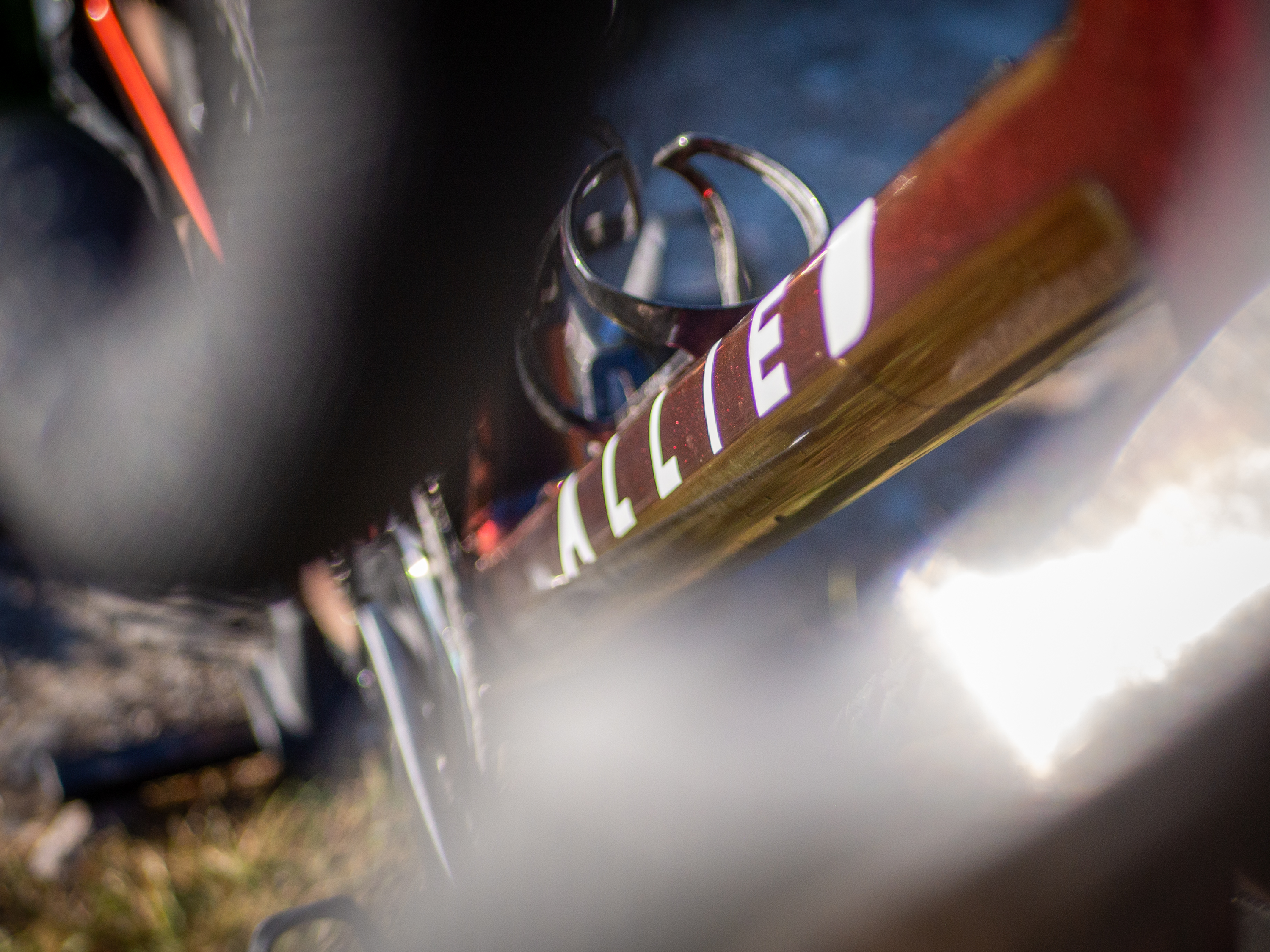
For much of that race, the course is double-track fireroad with two compacted tyre channels on either side and a rocky mound up the middle. For most riders, once you're in one of those two channels, you don't want to leave for fear of hitting bigger rocks and puncturing. On the Able, the big tyres ate up washboard surfaces for fun, and the stable platform continually urges you to hop into the other lane and gain a few places.
The term 'confidence-inspiring' gets bandied around for bike handling in reviews all the time, but it's a really appropriate description here. Sure, it was probably a mix of the geometry, the chunky tyres, the grippy Arundel Gecko bar tape fitted (genuinely game-changingly good), and my race day red mist, but the Able was very much living up to its name when the road pointed down.
It wasn't half bad when the road pointed up, either. The 8.4kg total weight helped keep things responsive under power, as did the reasonably stiff pedalling platform.
This does lead me onto one of the bike's slightly more negative points, though.
I won't lie that the horizontal top tube makes the bike look bloomin' lovely, but it also leads to a fairly minimal amount of seatpost on show. Couple that with the nearly-in-line seatstays and round seatpost, and the result is a pretty stiff ride.
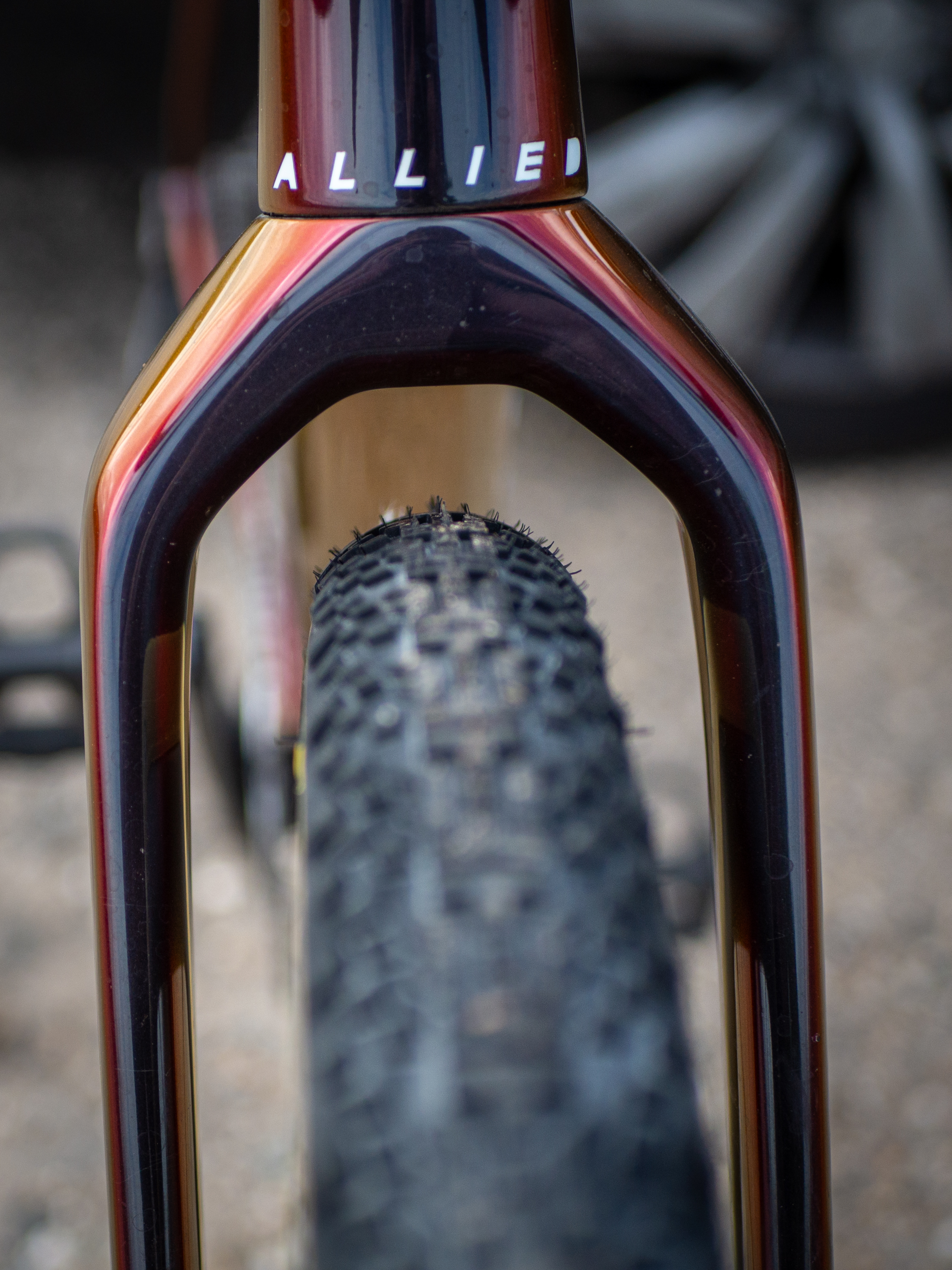
I rode the bike with 40mm Pirelli P Zero Race TLR road tyres for a while, then some 45mm Panaracer Gravelkings for a few long gravel training rides before I stuck the fat race tyres on, and without taking advantage of extra cushioning the bigger tyres provide, I was surprised at just how much of the road I could feel.
It wasn't so bad that I could tell you which side of a coin I'd ridden over, but it was immediately evident that Allied is relying on its users to spec mountain bike tyres for comfort.
That's their prerogative, though. And in fact, Allied actively quotes a minimum recommended tyre width of 45mm; the first I've seen of a brand suggesting a minimum. I can't imagine anyone planning to buy the Able not intending to take advantage of the progressive clearance on offer, and with the wider tyres, the ride was certainly better.
Regardless, it's something to bear in mind, especially if you're hoping to double up your Able as a road bike too, and to that point, whereas the previous Able came equipped with mudguard mounts, the new one does not.
I'd be really intrigued to get it onto Silverstone Sports Engineering Hub's pedalling efficiency rig and compare it to something like an S-Works Crux or a Trek Checkpoint SLR to compare the frames. My expectation is that if you standardised wheels and tyre size to something that all three bikes could handle, ie 45mm, the Allied would compare quite badly over rougher surfaces.
We continually praise the benefits of wider tyres, but it's important to remember that it's just one piece of the overall puzzle. Frame design, geometry, carbon layup, suspension, wheel compliance, tyres and more all work together to create the ride quality.
But, importantly, the Allied can handle wider tyres than those and pretty much every other gravel bike on the market. That's its party trick, and while it relies on that, I expect if you repeated the same Silverstone test, maximising the available tyre clearance on each bike, so 45mm on the Trek, 47mm on the Crux, and 57mm on the Able, it would wipe the proverbial floor with the others.
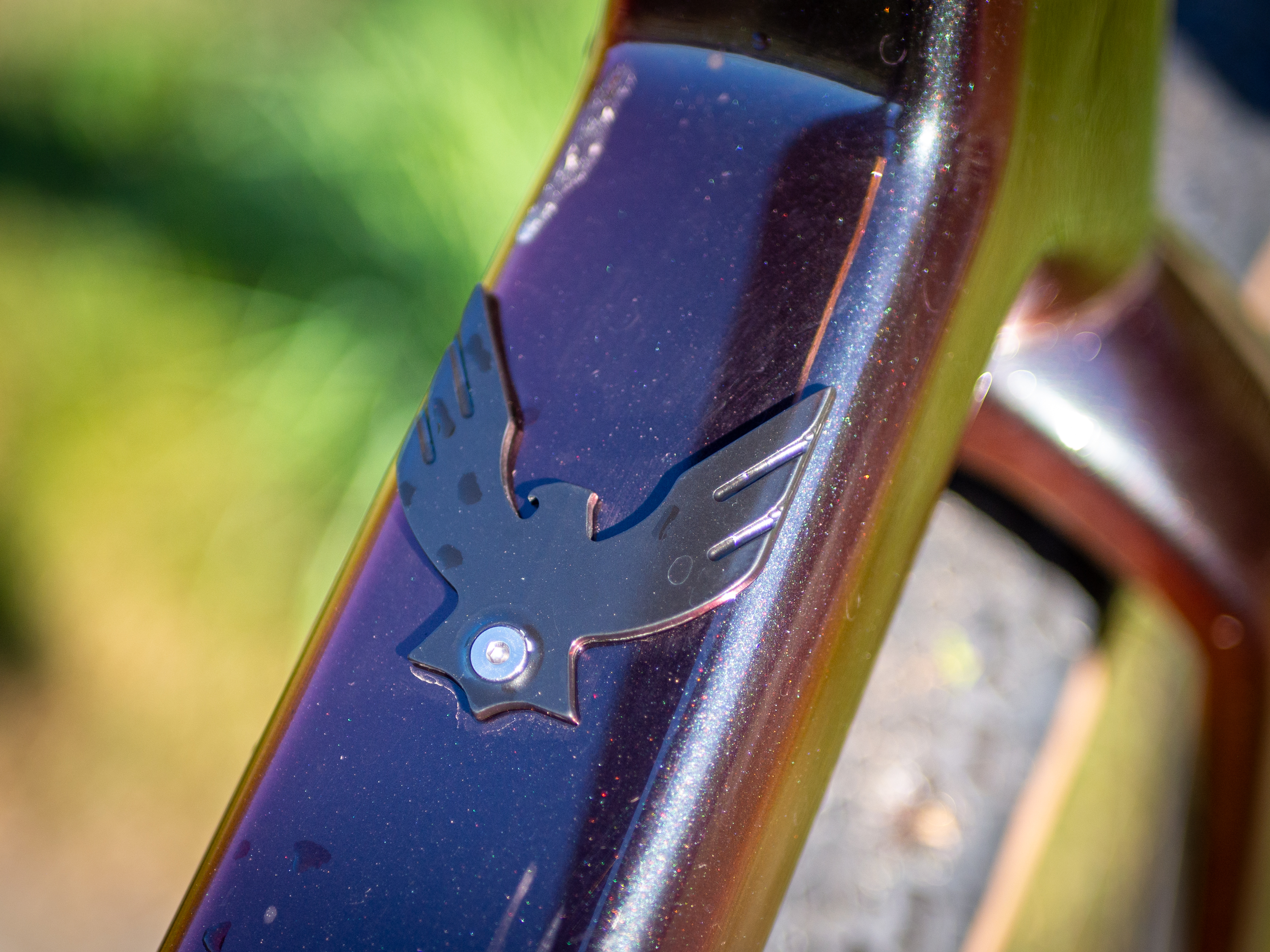
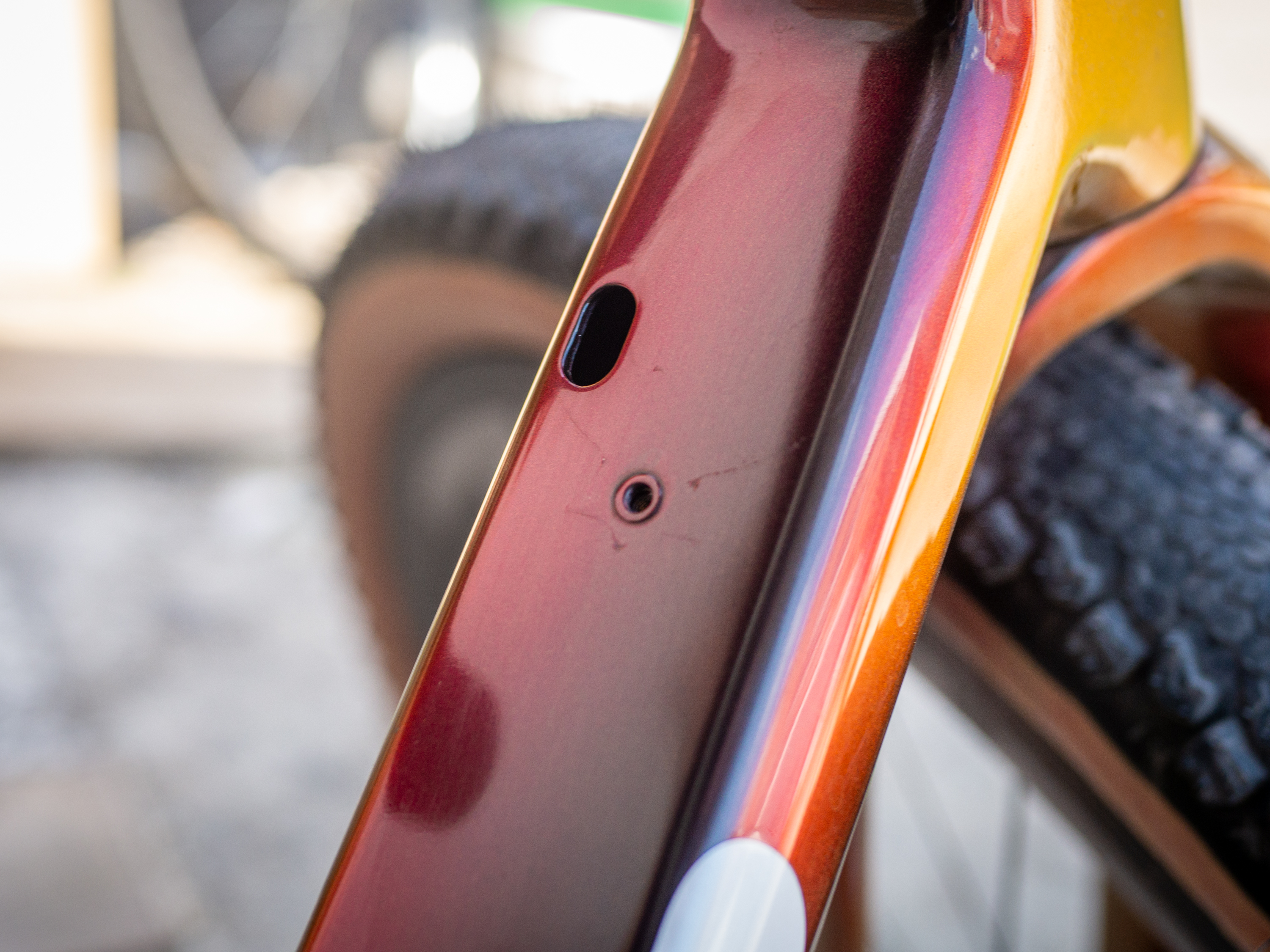
I appreciate how Allied has considered the end-user experience with the bike, too. Having the option to route cables externally or fit a dropper post might be a niche requirement for a select few owners, but the fact that Allied has made it possible really confirms to me that the brand is plugged in to what its potential customers want.
The effort to design and manufacture a proprietary stem that allows angle adjustment probably cost a fair amount of time and energy, but it's another instance of adding value where the brand could have easily spec'd a one-piece cockpit from Enve and called it done.
It's this attention to detail that elevates the bike from just another gravel race bike to a premium product. It's a quality that, at least on my review sample and as widely reported by owners of other Allied bikes, the overall build quality matches.
This should reassure anyone concerned about the brand's decision to move production to Asia, and it continues through the whole bike.
In another example, there are two mounts on the top tube for an easy-access bento box. Most bikes come with standard 4mm hex bolts here, just like you'd find on your bottle cage mounts, but to maintain the clean aesthetic of the bike and bring the weight down, the Able comes with recessed rivet nuts that are neat and unobtrusive.
With all that said, though, there is one area where the brand's decision to do something differently might have missed the mark, and that's the position of that storage door on the downtube.

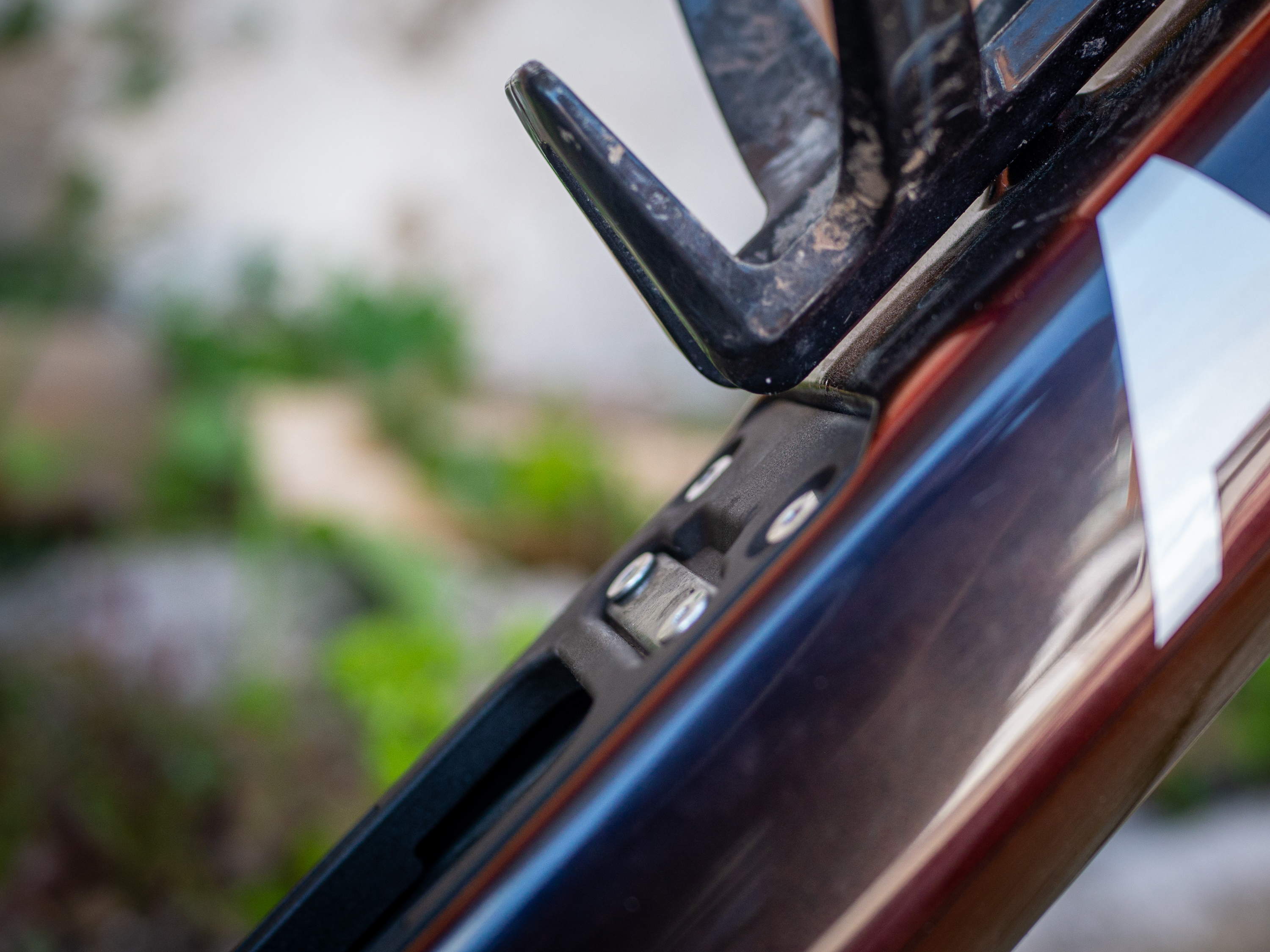
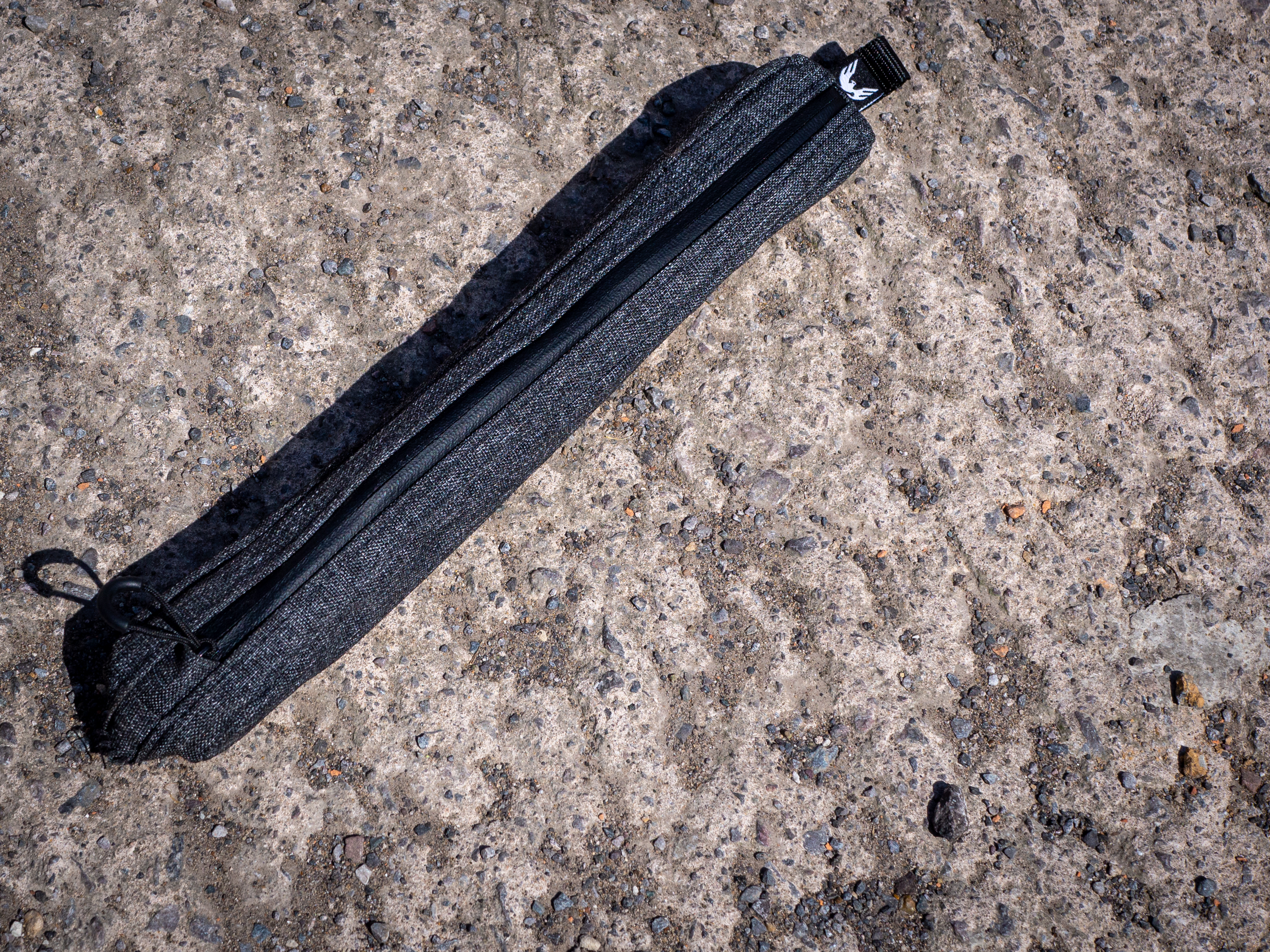
Firstly, I tried a handful of bottle cages, and each one had to be slid upward to the highest available position to avoid blocking the door from opening. This isn't a dealbreaker, but it's not ideal, and I can only imagine the problem worsens on frames smaller than my size L/58.
The second issue was more problematic, in that the position of the door so close to the seat tube, and the length of the internal sleeve, don't really play nicely.
To remove the sleeve, you need to pull it out and around a corner. It's therefore only really useful for storing a single inner tube. Anything bigger, or anything solid, such as a multi tool, CO2 or a tyre plug tool, gets stuck as you try to pull it out. In most of my test cases, it required a good amount of careful prying to recover, which isn't something I'd want to do in the heat and stress of a mid-race puncture.
There is a loop handle on the end of the sleeve to help you pull it out, but mine ripped off in my hamfisted attempts to release it from its prison.
Value
The Allied Able is available in four complete builds.
The base model is equipped with SRAM Rival AXS in a 'mullet' build with a GX mountain bike derailleur and Industry Nine 1/1 GRCX wheels at $6,775.
Next is a model equipped with the newest SRAM Force XPLR groupset and Industry Nine 1/1 Ultralite Carbon wheels at $8,300.
The next step up is $8,500, with a mullet setup based around SRAM Force with an X0 mech, paired with Industry Nine 1/1 Ultralite Carbon wheels.
The top-tier model is priced at $11,500, complete with SRAM's Red XPLR AXS groupset and Industry Nine Solix SL AR40c wheels. You can also buy the frameset alone at $4,500, with which you'll get a fork and seatpost included, alongside the proprietary ST03 stem.
Describing any bike at this price level as 'good value' is always quite a jarring thing to do since it's a massive amount of money, but it's hard to disagree that the Allied Able is one of the best gravel race bikes on the market right now.
If you're an American buyer, the outlay is pretty well in line with existing high-end gravel bikes. To compare apples to apples as much as possible, you could buy the Force XPLR-equipped Cannondale SuperX (non-Lab71) at $8,799; $499 more than the equivalent Able.
An S-Works Crux with Red XPLR will set you back $12,250, or a frameset is priced at $4,999.99. A Trek Checkmate SLR 9, with Red XPLR, is $12,999.99, with its $3,999.99 frameset excluding the seatpost and stem.
Not only is the Able cheaper for the most part than those three American competitors, I believe you'd be getting a product that's better equipped for racing, more capable overall, and more futureproof in its design.
Of course, those prices are correct at the time of writing, but President Trump's tariffs may affect things over the coming months and years.
The pricing structure for European buyers is a little more uncertain at this stage, too. Without a prominent distributor in Europe or the UK, shipping costs depend on the end destination, with some being quoted over $1000 for delivery alone.
And frames are being shipped from Asia to the US to be painted and assembled, so it's pretty unlikely we'll see European markets able to bypass those tariffs either.
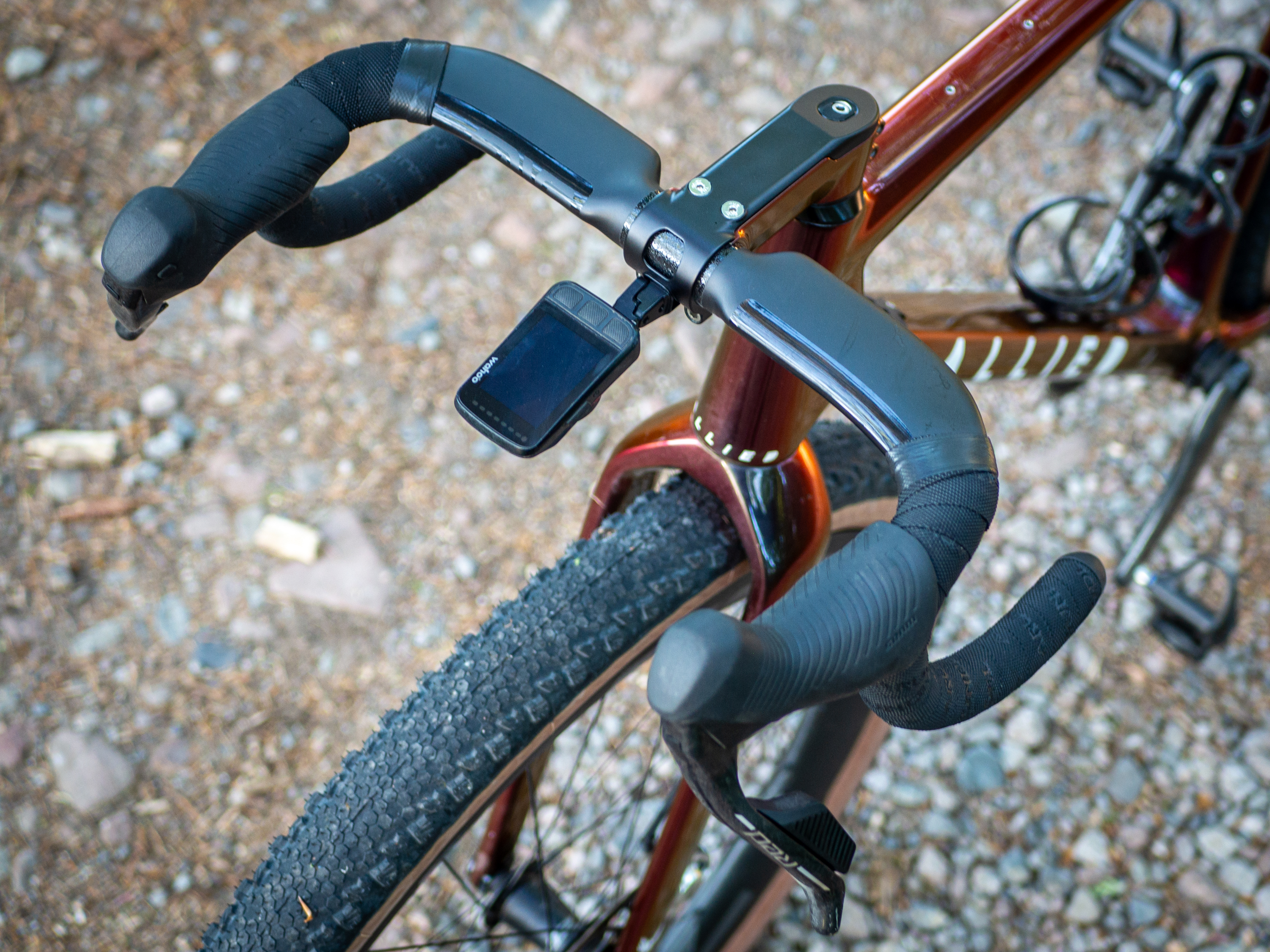
Verdict
The 2025 Allied Able is not without its faults, but as a gravel bike intended for racing, it is among the best available at the moment.
It is right at the cutting edge of what a gravel race bike should be, and it's perhaps no surprise that it is an American brand with its finger on the pulse, given the popularity of the sport in the country.
I say 'at the moment' though, because I have a feeling the dam is about to break on big-tyred gravel race bike launches. Late last year, I said similar things about the Ridley ASTR RS, which offered 53mm tyre clearance, a racy geometry and an aero profiled frame. Cube's Nuroad SLT has been propping up many of our wider-tyre lab tests with its 53mm clearance, Lauf's Seigla has been around for years, offering room for 57mm tyres, and earlier this year, the Argon 18 Dark Matter launched with similarly capacious clearance.
And just last month at Unbound Gravel, I spotted close to a dozen unreleased gravel bikes, and most of them had a similar 'wider clearance, more aero' playbook.
If you want what is easily one of the best race bikes on the market today, the Able should be high on your list, but if you're happy to wait a while, I'd give the summer a few months to play out before pulling the proverbial trigger.
Design and aesthetics | Stunningly good looking and designed right at the cutting edge of gravel racing trends. Only missing a mark due to the position of the storage door. | 9/10 |
Build | Specced exactly as I'd like it, with this flagship model getting top-tier wheels, groupset and cockpit components. | 10/10 |
Performance, handling and geometry | Slightly stiff from a comfort standpoint, but fast under power, stable at speed, and quick handling. | 9/10 |
Value | In the USA, the Able is cheaper than similarly specced competitors without a shortfall in performance. EU buyers will find it less competitive, but still a worthy consideration given its futureproof design. | 9/10 |
Overall | Row 4 - Cell 1 | 37/40 (93%) |

Josh is Associate Editor of Cyclingnews – leading our content on the best bikes, kit and the latest breaking tech stories from the pro peloton. He has been with us since the summer of 2019 and throughout that time he's covered everything from buyer's guides and deals to the latest tech news and reviews.
On the bike, Josh has been riding and racing for over 15 years. He started out racing cross country in his teens back when 26-inch wheels and triple chainsets were still mainstream, but he found favour in road racing in his early 20s, racing at a local and national level for Somerset-based Team Tor 2000. These days he rides indoors for convenience and fitness, and outdoors for fun on road, gravel, 'cross and cross-country bikes, the latter usually with his two dogs in tow.
You must confirm your public display name before commenting
Please logout and then login again, you will then be prompted to enter your display name.
